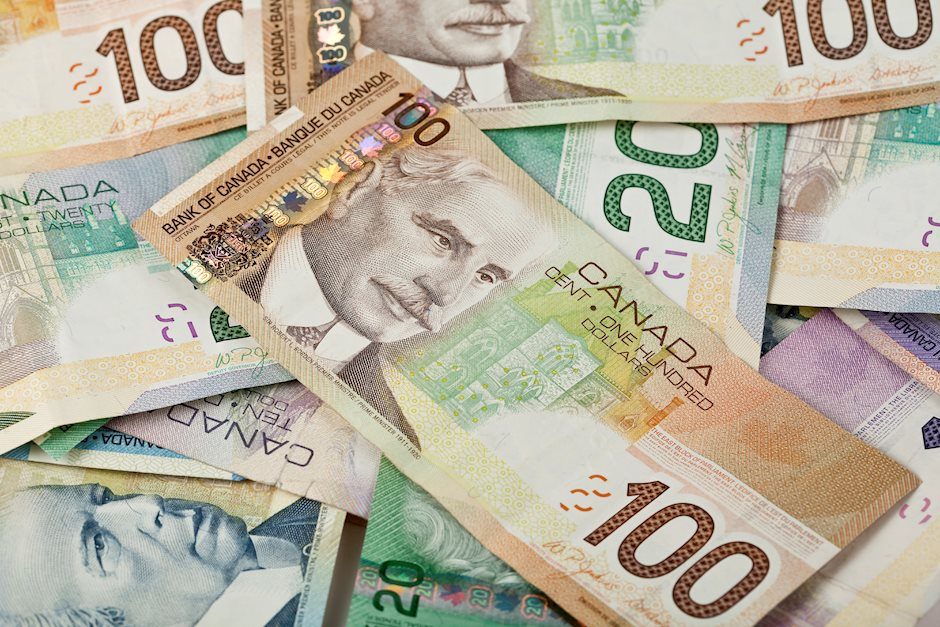USD/CAD slips below mid-1.3800s, downside potential seems limited amid falling Oil prices
- USD/CAD pulls back from the vicinity of the YTD peak touched on Monday.
- Dovish Fed expectations cap the USD upside and prompt some profit-taking.
- Bearish Oil prices could undermine the Loonie and help limit further losses.

The USD/CAD pair turns lower following an Asian session uptick to the 1.3865 region on Tuesday and for now, seems to have snapped a nine-day winning streak to its highest level since November 2023. The intraday downtick drags spot prices back below mid-1.3800s in the last hour, though any meaningful corrective decline still seems elusive.
Crude Oil prices remain under some selling pressure for the third straight day amid receding fears about a wider conflict in the Middle East. Apart from this, concerns about a weak demand in China – the world's largest crude importer – dragged the black liquid to its lowest level since June 10. This, along with the Bank of Canada's (BoC) dovish outlook, might continue to undermine the commodity-linked Loonie and act as a tailwind for the USD/CAD pair.
Meanwhile, growing acceptance that the Federal Reserve (Fed) will begin its rate-cutting cycle in September keeps the US Dollar (USD) bulls on the defensive below a two-and-half-week high touched on Monday. Moreover, the Relative Strength Index (RSI) on the daily chart is flashing slightly overbought conditions. This, in turn, prompts some profits around the USD/CAD pair, especially after the recent rally of nearly 300 pips from the monthly swing low.
Market participants now look forward to the US economic docket, featuring the release of the Conference Board's Consumer Confidence Index and JOLTS Job Openings. The focus, however, will remain glued to the outcome of a two-day FOMC policy meeting on Wednesday. Apart from this, the closely-watched US Nonfarm Payrolls (NFP) report on Friday will drive the USD in the near term and provide a fresh directional impetus to the USD/CAD pair.
Canadian Dollar FAQs
The key factors driving the Canadian Dollar (CAD) are the level of interest rates set by the Bank of Canada (BoC), the price of Oil, Canada’s largest export, the health of its economy, inflation and the Trade Balance, which is the difference between the value of Canada’s exports versus its imports. Other factors include market sentiment – whether investors are taking on more risky assets (risk-on) or seeking safe-havens (risk-off) – with risk-on being CAD-positive. As its largest trading partner, the health of the US economy is also a key factor influencing the Canadian Dollar.
The Bank of Canada (BoC) has a significant influence on the Canadian Dollar by setting the level of interest rates that banks can lend to one another. This influences the level of interest rates for everyone. The main goal of the BoC is to maintain inflation at 1-3% by adjusting interest rates up or down. Relatively higher interest rates tend to be positive for the CAD. The Bank of Canada can also use quantitative easing and tightening to influence credit conditions, with the former CAD-negative and the latter CAD-positive.
The price of Oil is a key factor impacting the value of the Canadian Dollar. Petroleum is Canada’s biggest export, so Oil price tends to have an immediate impact on the CAD value. Generally, if Oil price rises CAD also goes up, as aggregate demand for the currency increases. The opposite is the case if the price of Oil falls. Higher Oil prices also tend to result in a greater likelihood of a positive Trade Balance, which is also supportive of the CAD.
While inflation had always traditionally been thought of as a negative factor for a currency since it lowers the value of money, the opposite has actually been the case in modern times with the relaxation of cross-border capital controls. Higher inflation tends to lead central banks to put up interest rates which attracts more capital inflows from global investors seeking a lucrative place to keep their money. This increases demand for the local currency, which in Canada’s case is the Canadian Dollar.
Macroeconomic data releases gauge the health of the economy and can have an impact on the Canadian Dollar. Indicators such as GDP, Manufacturing and Services PMIs, employment, and consumer sentiment surveys can all influence the direction of the CAD. A strong economy is good for the Canadian Dollar. Not only does it attract more foreign investment but it may encourage the Bank of Canada to put up interest rates, leading to a stronger currency. If economic data is weak, however, the CAD is likely to fall.
Author

Haresh Menghani
FXStreet
Haresh Menghani is a detail-oriented professional with 10+ years of extensive experience in analysing the global financial markets.

















